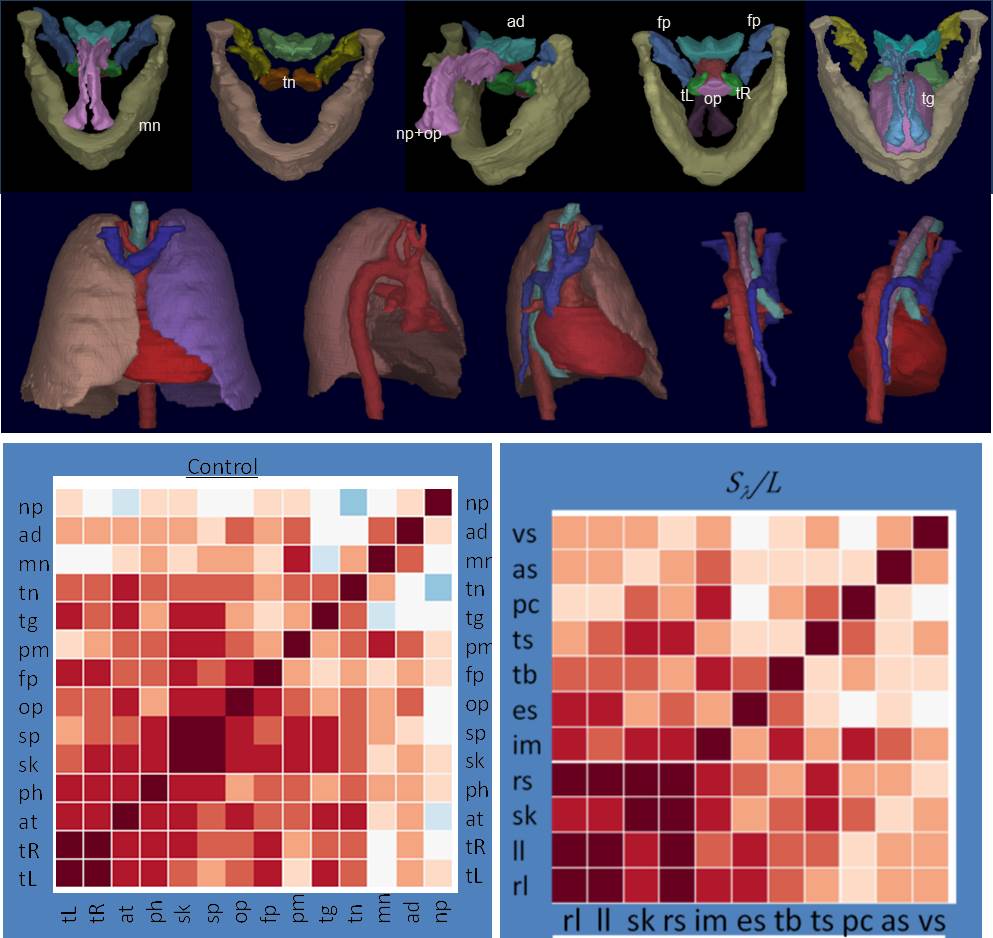
Knowledge of quantitative normal anatomy of full object assemblies in different body regions including individual object geometric, dynamic, shape, and tissue properties and object relationships is currently not available. Such knowledge is vital for developing effective body-wide anatomic models via all efforts such as AAR. It is also useful for understanding how object properties and relationships vary from normalcy in various disease conditions. A by-product of the model building stage of AAR is generation of such detailed knowledge.
An example of such knowledge is illustrated below for the neck and thoracic body regions where the shape length correlations among 14 neck objects and 11 thoracic objects are displayed as a heat map (left: for neck, right: for thorax). 3D renditions of some of the involved neck (top row) and thoracic objects (second row) are also displayed. Heat map colors range from red to blue corresponding to high positive to high negative correlation. Consider the neck heat map for illustration of the meaning of the map. The correlation in shape length between tongue (tg) and left tonsil (tL) is high positive while the correlation between nasopharynx (np) and tonsils (tn = tL+tR) is significantly negative. This means that the shape lengths of tg and tL vary together in a normal subject population, whereas for np and tn the variation occurs in opposite directions.

References:
1. Matsumoto MM, Udupa JK, Tong Y, Saboury B, Torigian DA. Quantitative normal thoracic anatomy at CT. Comput Med Imaging Graph. 2016;51:1-10. doi: 10.1016/j.compmedimag.2016.03.005. PubMed PMID: 27065241.